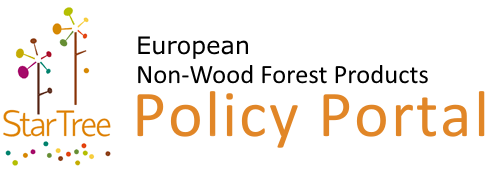Action plan for Chestnut (Turkey)
Description
Brief description of the instrument and its modus operandi
Increase and improvement of nut production focusing on the quality and the amount through silvicultural activities as pruning and thinning technics
Which problem the instrument is supposed to solve?
1. Occurrence of Chesnut disease , 2. Thinning of the young stands, 3. Regeneration of mature stands, 4. Reforestation and Rehabilitation of degraded areas , 5. Rotation ages for nuts and wood production, 6. Grafting of different clones/origin
Purpose or main objective / overall goal of the instrument?
Contribute to rural development by increasing chestnut production through a) Control of Chesnutt disease b) thinning of young stands c) Reforestation and Rehabilitation of degraded areas
Side objectives/goals of the instrument?
Halting or decreasing the immigration from rural areas to urban areas, improving the forest-forest villagers relationships, and contribution to the national economy
Innovation content or potential of the instrument?
The instrument does not contain a direct innovation, but the actions inside are intended to increase nut productivity through rehabilitation, thinning, regeneration, reforestation, grafting, disease prevention, regulation of rotation ages and the quality of products. So, this will indirectly affect marketing and innovation sector.
Which laws and regulations support the implement of this instrument?
The rescript of NWFP no:295
The initiator/promoter of the instrument?
Government agency: General Directorate of Forestry
Which organizations are involved in the operationalization of the instrument?
General Directorate of Forestry with the help of research organizations such as Faculties of forestry and research institutions
What roles do these organisation play in each of them?
in preparing this plan
How the monitoring is ensured?
the most important indicators are the quality and quantity of products: disease condition
How the compliance is ensured?
because rural people are keen to increase their products there is no need for enforcement
How is the overall performance of the instrument?
Implementation of all instruments is very new. Just started, need time to see the output/performance
References
Huss J., Kahveci O., 2009. Türkiye’de Doğaya Yakın Yapraklı Orman İşletmeciliği. Freiburg-Ankara, OGEM-VAK // Akıllı S., Katırcıoğlu Y. Z., Maden S., 2011. Kestane Tohumlarının Fungal Florası Üzerinde Çalışmalar. 14–17 Haziran // Türkiye IV. Tohumculuk Kongresi. Ondokuz Mayıs Üniversitesi Ziraat Fakültesi. Cilt 1, sayfa 271–276. Samsun. // Akıllı S., Ulubaş-Serçe Ç., Katırcıoğlu Y. Z., Maden S., 2012. Involvement of Phytophthora spp. in chestnut decline // in the Black Sea region of Turkey. Forest Pathology. Volume 42, Issue 5, pages 377-386. DOI: 10,1111/j. 1439-0329.2012.00770.x. // Karagöz M., Gençsoylu İ., 2004. Aydın li Kestane Yetistirme Alanlarında Zararlı ve Yararlı Türler ve Ekonomik Önemleri. // Samsun..
Brief description of the context for the emergence of the instrument
The duration and the amount of payment of usufruct in the Chestnut plantation/rehabilitation areas for locals would create a debate in the future.
Have any of the items mentioned above changed since the instrument entered into force?
No
Is there any qualitative or quantitative study of the impacts of the instrument?
No
| Instrument | |
| Year | 2013 |
|---|---|
| Policy area | Forestry |
| Affected activity | Harvesting/Production |
| Affected actors | Landowner/land manager, Picker/harvester/hunter, Processor, Retailer |
| Products | Nuts |
| Subject | NWFP |
| Promoter/initiator | Public |
| Zone | South East Europe |
| Countries | Turkey |
| Regions (NUTS 2) | Bursa Subregion |
| Focus on NWFP | Direct |
| Instrument type | Regulatory |
| Legal status | Binding |
| Geographical scope | National |
| Affected activity | Harvesting/Production + |
| Affected actors | Landowner/land manager +, Picker/harvester/hunter +, Processor + and Retailer + |
| Class | Instrument + |
| Countries | Turkey + |
| Document category | Instrument + |
| Encodedname | Action_plan_for_Chestnut + |
| Focus | Direct + |
| Geographical scope | National + |
| Initiator | Public + |
| Instrument type | Regulatory + |
| Lcname | action plan for chestnut + |
| Legal status | Binding + |
| Name | Action plan for Chestnut + |
| Policy area | Forestry + |
| Products | Nuts + |
| Reference ID | 545 + |
| Regions | Bursa Subregion + |
| Response set | Bursa Instrument A1 - Agent 1 Land + |
| Subject | NWFP + |
| Year | 2013 + |
| Zone | South East Europe + |
